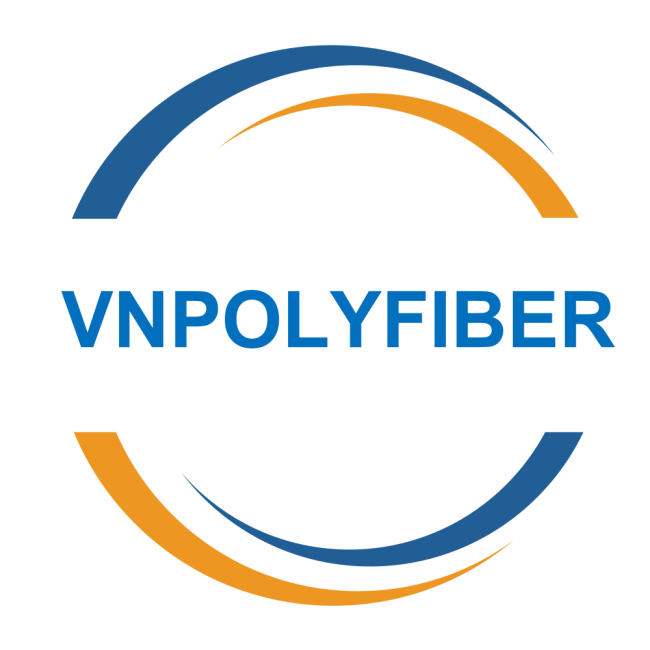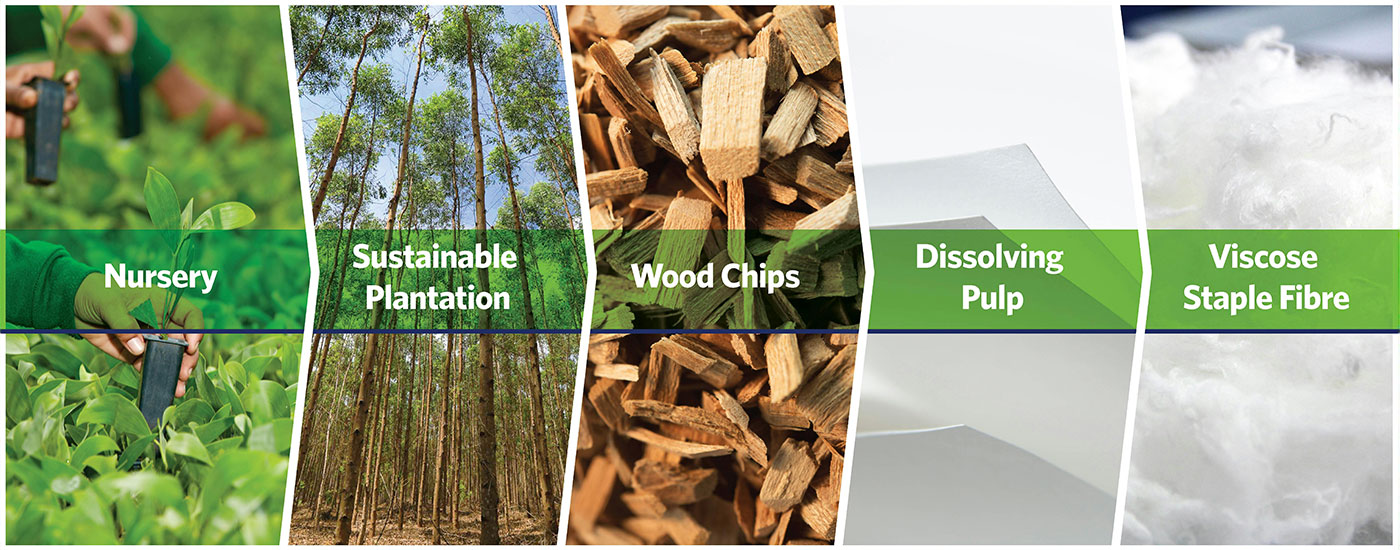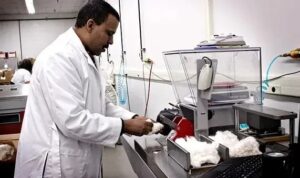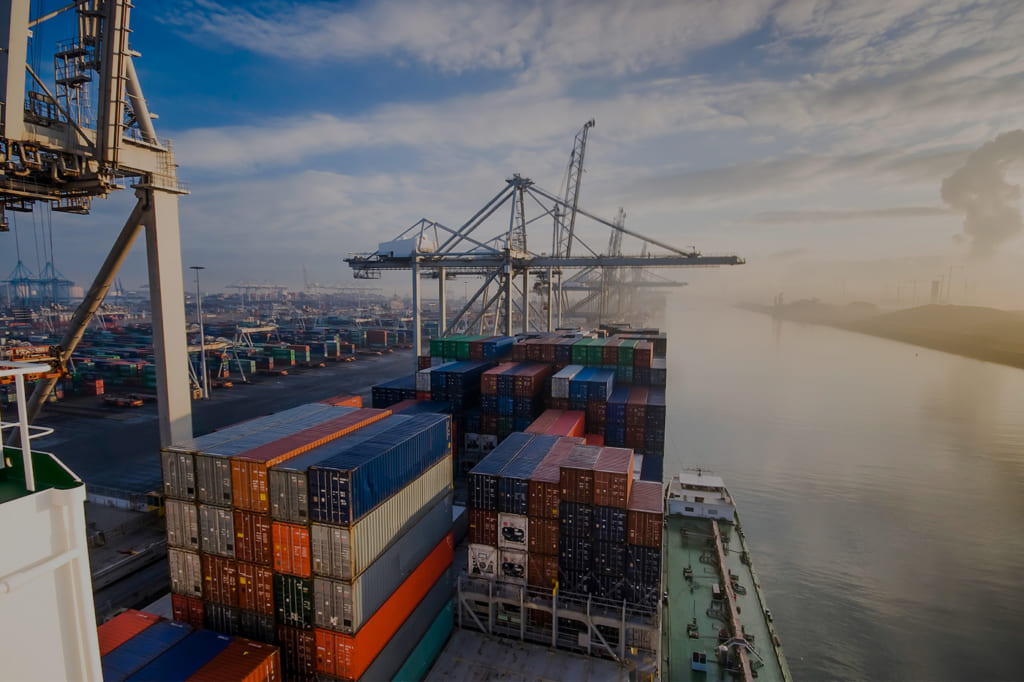The viscose fiber market is poised for growth across various applications, driven by trends in sustainability, innovation, and expanding markets. The demand for different types of viscose products is expected to increase, particularly in textiles, non-wovens, and blended fabrics, as industries continue to innovate and adapt to changing consumer preferences.
Projections for Global Viscose Fiber Industry
1. Capacity and Production
- Global Capacity Expansion:
- The global viscose fiber production capacity is expected to grow steadily due to increasing demand from the textile and non-woven industries. Major producers, particularly in Asia (China, India, Indonesia), are expanding their production capacities to meet this demand.
- By 2025, global viscose fiber production capacity is projected to exceed 8-9 million metric tons annually, driven by investments in new plants and technological upgrades in existing facilities.
- Production Volumes:
- The actual production of viscose fibers is anticipated to closely align with capacity expansion, with utilization rates expected to remain high. Production volumes are projected to grow at a CAGR (Compound Annual Growth Rate) of 4-6% over the next five years, reaching approximately 7.5-8.5 million metric tons by 2025.
- Production is heavily concentrated in Asia, which accounts for more than 70% of global output, with China alone producing over 60% of the world’s viscose fibers.
- Production Value:
- The global production value of viscose fibers is projected to increase significantly due to rising demand and prices, with an estimated market value exceeding $16-18 billion by 2025. The growth in production value will be supported by higher demand for sustainable textiles and advancements in fiber technology.
2. Cost and Profit Estimations
- Cost Estimations:
- The cost of producing viscose fiber is influenced by several factors, including raw material (wood pulp) prices, energy costs, labor, and environmental compliance expenses. The estimated production cost ranges from $1.5 to $2.5 per kilogram, depending on the region and production efficiency.
- With ongoing technological improvements and economies of scale, production costs are expected to decrease slightly, particularly in countries with advanced production facilities.
- Profit Margins:
- Profit margins in the viscose fiber industry are expected to remain healthy, with average profit margins ranging from 10% to 20%, depending on market conditions and product differentiation (e.g., premium, eco-friendly viscose).
- Companies with strong sustainability credentials and innovative products are likely to command higher margins, particularly in developed markets where demand for sustainable textiles is robust.
3. Market Share, Supply, and Consumption
- Market Share:
- Asia-Pacific dominates the global viscose fiber market, holding over 70% of the market share. China is the largest producer and consumer, with a market share exceeding 60%. India and Indonesia are also significant players.
- Europe and North America hold smaller market shares, though demand for sustainable and high-quality textiles is driving growth in these regions.
- The market share of viscose fibers in the global textile industry is expected to grow slightly, with a projected increase from around 5-7% to 8-10% by 2025, as it continues to replace synthetic fibers in various applications.
- Supply and Consumption:
- Global supply is expected to keep pace with rising demand, with a balanced market scenario projected over the next few years. Consumption is anticipated to grow in line with production, driven by increasing demand in both traditional (textiles) and non-traditional (non-wovens, technical textiles) sectors.
- Consumption growth is particularly strong in Asia-Pacific, but Europe and North America are also seeing increased consumption due to the shift towards sustainable textiles.
4. Import and Export Dynamics
- Import and Export Trends:
- China: While China is the largest producer, it also imports significant amounts of wood pulp for viscose production. However, China exports a large volume of viscose fibers to other countries, particularly in Asia and Europe.
- India and Indonesia: These countries are also major exporters of viscose fibers, with growing export volumes due to increasing global demand.
- Europe and North America: These regions are primarily importers of viscose fibers, given their lower production capacities. However, demand for high-quality and sustainable fibers is driving imports from Asia.
- Export Growth: Global exports of viscose fibers are expected to grow at a moderate pace, driven by demand in emerging markets and the expansion of textile industries in regions like Southeast Asia, Africa, and Latin America.
- Trade Policies and Tariffs:
- Trade policies and tariffs can significantly impact the import and export dynamics of viscose fibers. Countries with favorable trade agreements and low tariffs are likely to see an increase in trade volumes.
- Geopolitical tensions and changes in trade policies could lead to shifts in trade patterns, potentially impacting the cost and availability of viscose fibers in certain markets.
Summary of Projections:
- Capacity: Expected to exceed 8-9 million metric tons by 2025.
- Production: Projected to reach 7.5-8.5 million metric tons annually by 2025.
- Production Value: Estimated to surpass $16-18 billion by 2025.
- Cost: Production cost ranging from $1.5 to $2.5 per kilogram, with potential for slight decreases.
- Profit Margins: Expected to range between 10% and 20%, with higher margins for sustainable and innovative products.
- Market Share: Asia-Pacific continues to dominate, with global viscose market share in textiles expected to grow to 8-10%.
- Supply and Consumption: Projected to grow in line with production, with strong demand in Asia-Pacific.
- Import and Export: Asia remains the largest exporter, while Europe and North America are key importers. Export growth expected, driven by demand in emerging markets.
These projections indicate a positive outlook for the global viscose fiber industry, with growth driven by capacity expansion, rising demand for sustainable textiles, and ongoing innovations in fiber production.
Factors Contributing to the Final Price of Viscose Fiber
- Raw Material Costs
- Wood Pulp: The primary raw material for viscose fiber is wood pulp, derived from trees like beech, pine, or eucalyptus. The cost of wood pulp is influenced by the availability of wood, forestry practices, and environmental regulations.
- Chemical Costs: Various chemicals, such as caustic soda (sodium hydroxide), carbon disulfide, and sulfuric acid, are used in the production process. The prices of these chemicals fluctuate based on market demand, production costs, and regulatory factors.
- Production Costs
- Energy Consumption: Viscose fiber production is energy-intensive. The cost of electricity, steam, and other energy sources used in the manufacturing process significantly affects the final price.
- Labor Costs: Labor costs, including wages, benefits, and training, vary by region and influence the overall production costs, especially in labor-intensive processes.
- Machinery and Maintenance: The cost of maintaining and upgrading machinery used in the viscose production process also contributes to the final price. Advanced technology can reduce costs in the long term, but initial investment and ongoing maintenance are significant factors.
- Environmental and Regulatory Compliance
- Environmental Regulations: Compliance with environmental regulations, such as those governing waste management, emissions, and effluent treatment, can increase production costs. Companies may need to invest in cleaner technologies or pay fees for non-compliance.
- Sustainability Certifications: Obtaining sustainability certifications or eco-labels, such as FSC (Forest Stewardship Council) or OEKO-TEX, can add to the cost but may also enable the company to charge a premium price.
- Supply Chain and Logistics
- Transportation Costs: The cost of transporting raw materials to the manufacturing site and finished fibers to customers affects the final price. Fuel prices, transportation infrastructure, and distance to market are key factors.
- Supply Chain Disruptions: Any disruptions in the supply chain, such as delays, shortages of raw materials, or geopolitical issues, can lead to increased costs, which are often passed on to the consumer.
- Market Demand and Competition
- Demand Fluctuations: The demand for viscose fiber in various industries, particularly textiles and non-wovens, influences pricing. High demand can drive prices up, while oversupply or reduced demand can lead to price reductions.
- Competition: The level of competition among viscose fiber manufacturers also affects pricing. In a highly competitive market, prices may be driven down, while companies with unique or superior products may charge a premium.
- Currency Exchange Rates
- Global Trade: Viscose fiber is traded globally, and fluctuations in currency exchange rates can affect the cost of imports and exports, thus impacting the final price in different markets.
- Taxes and Tariffs
- Import/Export Duties: Taxes, tariffs, and duties imposed by governments on the import or export of viscose fibers or raw materials can add to the final price.
- Value-Added Tax (VAT) and Sales Tax: Applicable taxes in the country of sale also contribute to the final cost of the product to the consumer.
Raw Materials Used for Viscose Fiber Manufacturing
- Wood Pulp
- Source: Wood pulp is the primary raw material for viscose fiber. It is typically sourced from trees like beech, pine, eucalyptus, and spruce.
- Preparation: The wood is processed to remove lignin and other impurities, resulting in cellulose, which is the key ingredient for viscose production.
- Chemicals
- Caustic Soda (Sodium Hydroxide): Used to treat the wood pulp in the first step of the process, converting cellulose into alkali cellulose.
- Carbon Disulfide: Reacts with the alkali cellulose to form cellulose xanthate, which is then dissolved in caustic soda to produce viscose solution.
- Sulfuric Acid: Used to regenerate cellulose fibers from the viscose solution in the spinning process.
- Zinc Sulfate: Sometimes added to the spinning bath to modify the properties of the fibers, such as their strength and elasticity.
- Water
- Usage: Large quantities of water are used in the viscose fiber production process, particularly in washing and purifying the fibers to remove chemical residues.
- Additives (Optional)
- Dyes and Pigments: These can be added during the production process to create colored viscose fibers.
- Softening Agents: Used to enhance the softness and feel of the final product, especially in textile applications.
Estimated Demand for Different Types of Products in the Viscose Fiber Market
- Viscose Staple Fiber (VSF)
- Primary Demand: Viscose staple fiber (VSF) is the most common form of viscose fiber, accounting for the majority of the market demand. It’s primarily used in the textile industry for apparel, home textiles, and non-woven products like wipes and hygiene products.
- Market Share: VSF represents a significant portion of the total viscose fiber market, with demand driven by the fashion industry’s need for soft, breathable fabrics.
- Growth Projection: The demand for VSF is expected to grow steadily, especially in developing regions like Asia-Pacific, due to the expanding textile and apparel industries.
- Viscose Filament Yarn (VFY)
- Primary Demand: Viscose filament yarn (VFY) is used in premium textile applications, including high-end fashion fabrics, linings, and decorative fabrics. It’s favored for its silk-like appearance and smooth texture.
- Market Share: VFY holds a smaller market share compared to VSF but is significant in the luxury textile segment.
- Growth Projection: The demand for VFY is expected to grow, particularly in markets that cater to high-end fashion and luxury textiles. However, the growth rate may be slower compared to VSF due to the niche nature of its applications.
- Non-Woven Viscose Products
- Primary Demand: Non-woven viscose products, such as wipes, medical textiles, and hygiene products, are gaining traction. The properties of viscose, such as absorbency and softness, make it ideal for these applications.
- Market Share: The non-woven segment is growing, driven by increasing demand in healthcare, personal care, and industrial applications.
- Growth Projection: This segment is expected to see robust growth, particularly in regions with a growing healthcare sector and increasing awareness of hygiene.
- Blended Viscose Products
- Primary Demand: Viscose fibers are often blended with other fibers like cotton, polyester, or elastane to enhance the properties of fabrics, such as stretch, durability, and cost-effectiveness.
- Market Share: Blended products represent a significant portion of the viscose fiber market, especially in the textile industry where versatility is key.
- Growth Projection: The demand for blended viscose products is expected to grow, especially in the fast fashion and sportswear segments, as consumers seek affordable yet high-performance fabrics.
Upcoming Industry Applications and Trends for the Viscose Fiber Market
- Sustainable and Eco-Friendly Applications
- Trend: As environmental concerns grow, there’s increasing demand for sustainable and biodegradable fibers. Viscose, being a plant-based and biodegradable fiber, is well-positioned to benefit from this trend.
- Applications: Sustainable fashion brands are increasingly using viscose in place of synthetic fibers. The development of eco-friendly viscose production processes, such as closed-loop systems, will further drive demand.
- Growth in Non-Woven and Technical Textiles
- Trend: The non-woven and technical textiles sectors are expanding rapidly, driven by the need for high-performance materials in healthcare, automotive, and construction industries.
- Applications: Viscose is being used in medical textiles (e.g., surgical gowns, face masks), automotive interiors, filtration media, and geotextiles. The demand for these applications is expected to grow, particularly in regions investing in healthcare infrastructure and industrial development.
- Rising Demand in Home Textiles
- Trend: Home textiles, including bed linens, curtains, and upholstery, are a growing market for viscose fibers due to their comfort, softness, and ability to blend with other materials.
- Applications: As consumers seek affordable yet luxurious home décor, viscose is becoming a popular choice for these products. The trend towards eco-friendly home textiles also boosts demand.
- Innovation in Viscose Blends
- Trend: There is ongoing innovation in blending viscose with other fibers to create fabrics with enhanced properties, such as moisture-wicking, stretch, and durability.
- Applications: Viscose blends are increasingly being used in activewear, sportswear, and performance apparel. The fashion industry’s shift towards multifunctional and athleisure wear is expected to drive demand for these blends.
- Expansion in Emerging Markets
- Trend: Emerging markets, particularly in Asia-Pacific, Africa, and Latin America, are experiencing growing demand for viscose fibers due to rising disposable incomes, urbanization, and expanding textile industries.
- Applications: Viscose is being used in both traditional apparel and modern textile applications in these regions. The fast fashion industry in emerging markets is a significant driver of demand.
- Adoption in the Circular Economy
- Trend: The concept of a circular economy, where materials are recycled and reused, is gaining traction. Viscose fiber, due to its biodegradable nature, fits well within this framework.
- Applications: Viscose is increasingly being used in products designed for recyclability or biodegradability. Companies are exploring ways to recycle viscose fibers and reduce waste in production processes.
- Development of High-Performance Viscose
- Trend: R&D efforts are focusing on developing high-performance viscose fibers that offer enhanced strength, elasticity, and moisture management, making them suitable for a wider range of applications.
- Applications: These high-performance viscose fibers could find uses in technical textiles, sportswear, and other demanding applications where traditional viscose might not have been suitable.





